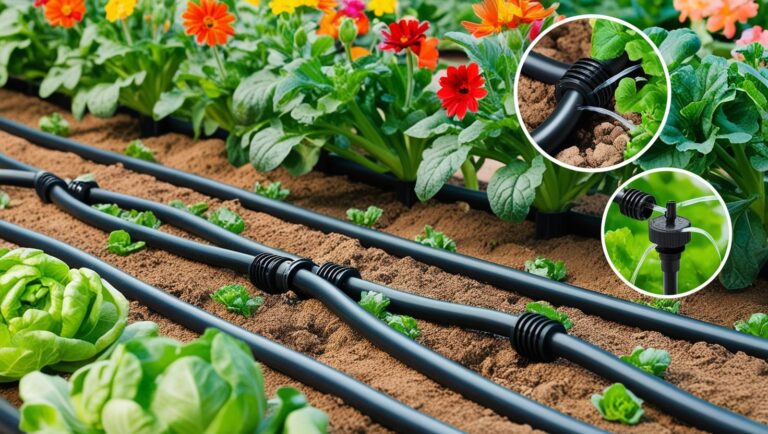Meta Description: Learn practical tips and strategies for balancing a full-time job with micro homesteading. Discover time-saving techniques and how to make the most of limited hours for a sustainable, rewarding lifestyle.
Balancing a full-time job with the responsibilities of micro homesteading may feel overwhelming at first, but guess what? You don’t have to choose between the two!
Micro homesteading is designed to fit into even the busiest schedules. With the right strategies and a sprinkle of creativity, you can grow your own food, raise backyard animals, and live sustainably—all without sacrificing your 9-to-5.
In this guide, I’ll walk you through the practical steps to make it happen.
From time-saving techniques to automation hacks, you’ll learn how to harmonize your work-life balance while cultivating a homestead you can be proud of.
Why Micro Homesteading Fits a Busy Schedule
One of the greatest things about micro homesteading is that it’s incredibly flexible. Whether you live in an urban apartment or a suburban home, you can start small and scale up as your confidence grows.
- Start Small, Dream Big: Micro homesteading doesn’t require acres of land. A few potted herbs on your balcony or a small raised garden bed in your yard can yield surprising results.
- Built for Busy Lives: Unlike traditional farming, micro homesteading is tailored to fit limited time and space. You don’t have to quit your job to make an impact.
- Inspiring Stories: Professionals around the world are growing their own food, even in tight spaces. Imagine grabbing fresh basil from your windowsill after a busy workday—it’s both satisfying and doable!
Time Management Tips for Micro Homesteaders
With a full-time job, your time is precious. Effective planning and prioritization will help you achieve more with less effort.
- Focus on High-Impact Activities: Choose tasks that yield the biggest results, like planting fast-growing vegetables or setting up a compost bin.
- Batch Your Tasks: Dedicate specific times for gardening or animal care, such as weekends or evenings.
- Use Tools and Technology: Smart planners, apps, and timers can help you stay on top of your micro homestead schedule.

Choosing Low-Maintenance Crops and Projects
The key to balancing your workload is selecting low-maintenance options that thrive with minimal intervention.
- Best Crops for Beginners: Start with herbs (basil, mint, parsley) and hardy greens (kale, spinach, chard) that grow quickly and require little attention.
- Low-Maintenance Livestock: If you want to raise animals, consider chickens for fresh eggs or rabbits, which are easy to care for and cost-effective.
- Perennial Plants: Invest in perennials like berry bushes or asparagus that grow back year after year with little effort.
Leveraging Automation and Smart Solutions
Automation is your secret weapon for homesteading success while working full-time.
- Automated Watering Systems: Drip irrigation and timers ensure your plants stay hydrated, even when you’re not home.
- Timers and Sensors: Use tools like soil moisture sensors to optimize your watering schedule.
- Homesteading Apps: Apps like Gardenate or Planter can help you track planting schedules and care routines.
Building a Support System for Homesteading
You don’t have to do this alone! A support system can make your homesteading journey smoother and more enjoyable.
- Involve Your Family or Roommates: Sharing tasks, like watering plants or collecting eggs, can lighten the load and make it a fun bonding activity.
- Network with Local Homesteaders: Joining local gardening groups or online forums can connect you with resources, advice, and even seed swaps.
- Find Community Support: Social media groups or meetups are great for finding like-minded individuals who share your passion.

Balancing Work-Life-Homestead Priorities
Keeping all the plates spinning can be tricky, but it’s entirely possible with the right mindset.
- Set Realistic Goals: Don’t aim to be self-sufficient overnight. Start with small, manageable goals and celebrate your wins.
- Simplify and Outsource: It’s okay to buy compost instead of making it or to start with seedlings rather than seeds.
- Avoid Burnout: Prioritize self-care and remember that micro homesteading is meant to enhance your life, not add stress.
Measuring Your Success and Adjusting Goals
Reflection and flexibility are key to keeping your micro homestead thriving alongside your career.
- Track Your Progress: Keep a journal or use an app to note what’s working and what isn’t.
- Celebrate Small Wins: Grew your first tomato? That’s a win worth celebrating!
- Adapt as Needed: Life changes, and so can your homesteading goals. Be open to tweaking your routine.
Balancing a full-time job with micro homesteading isn’t just a dream—it’s entirely achievable with the right approach.
By starting small, using innovative tools, and focusing on high-impact activities, you can create a thriving micro homestead while excelling in your career.
The best part? Every little step you take toward sustainable living makes a meaningful difference.
So, why not start today?





